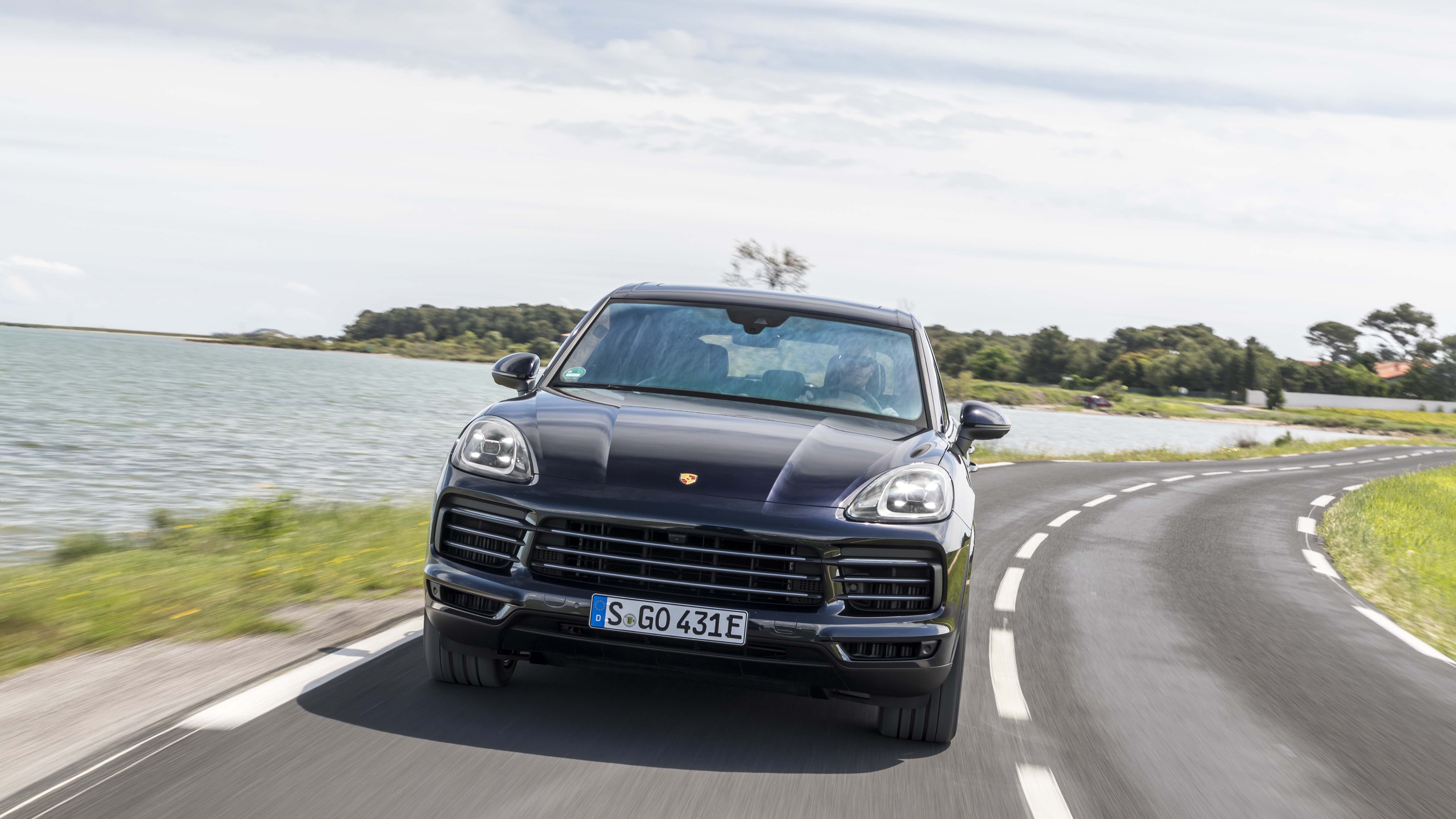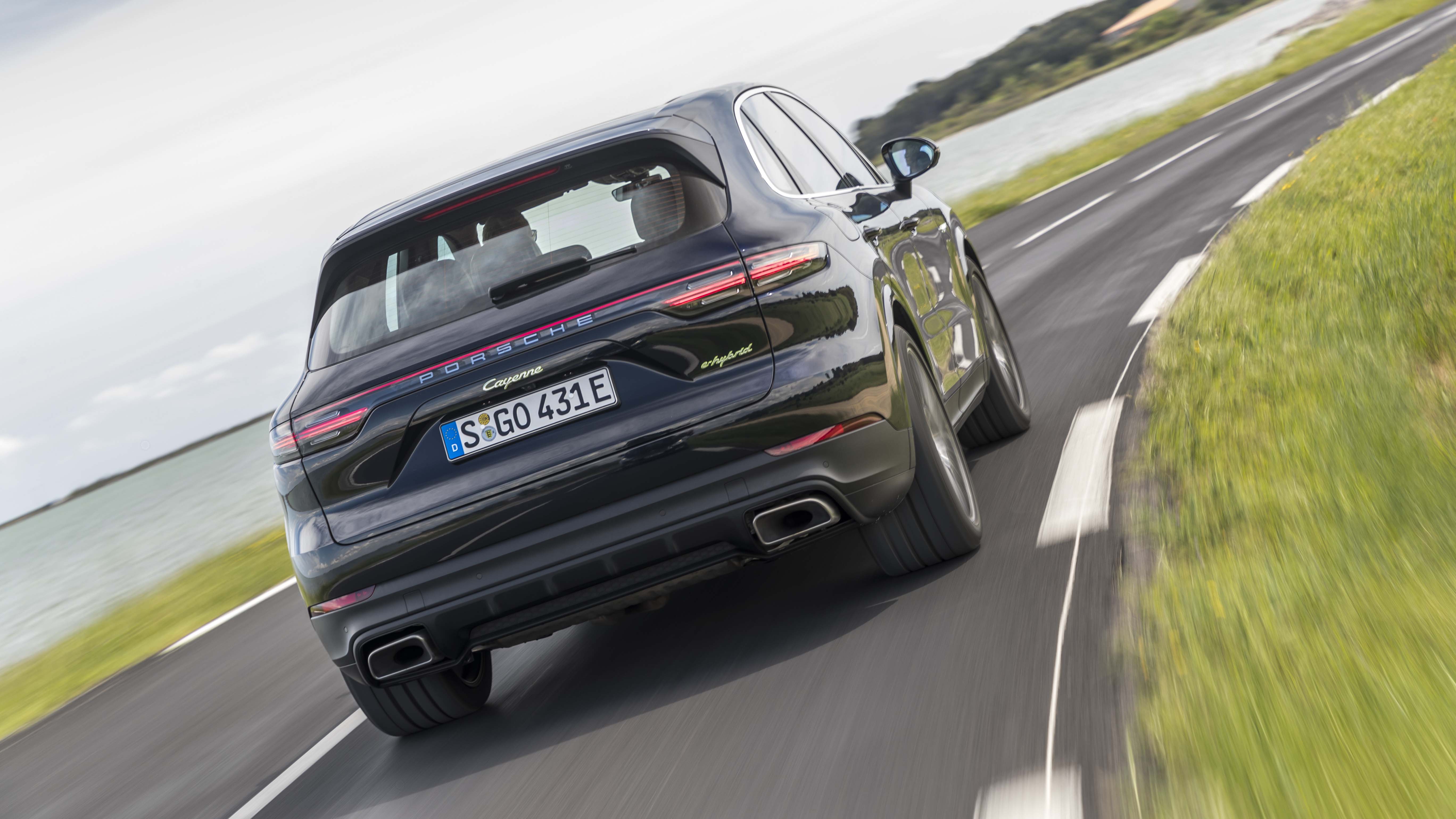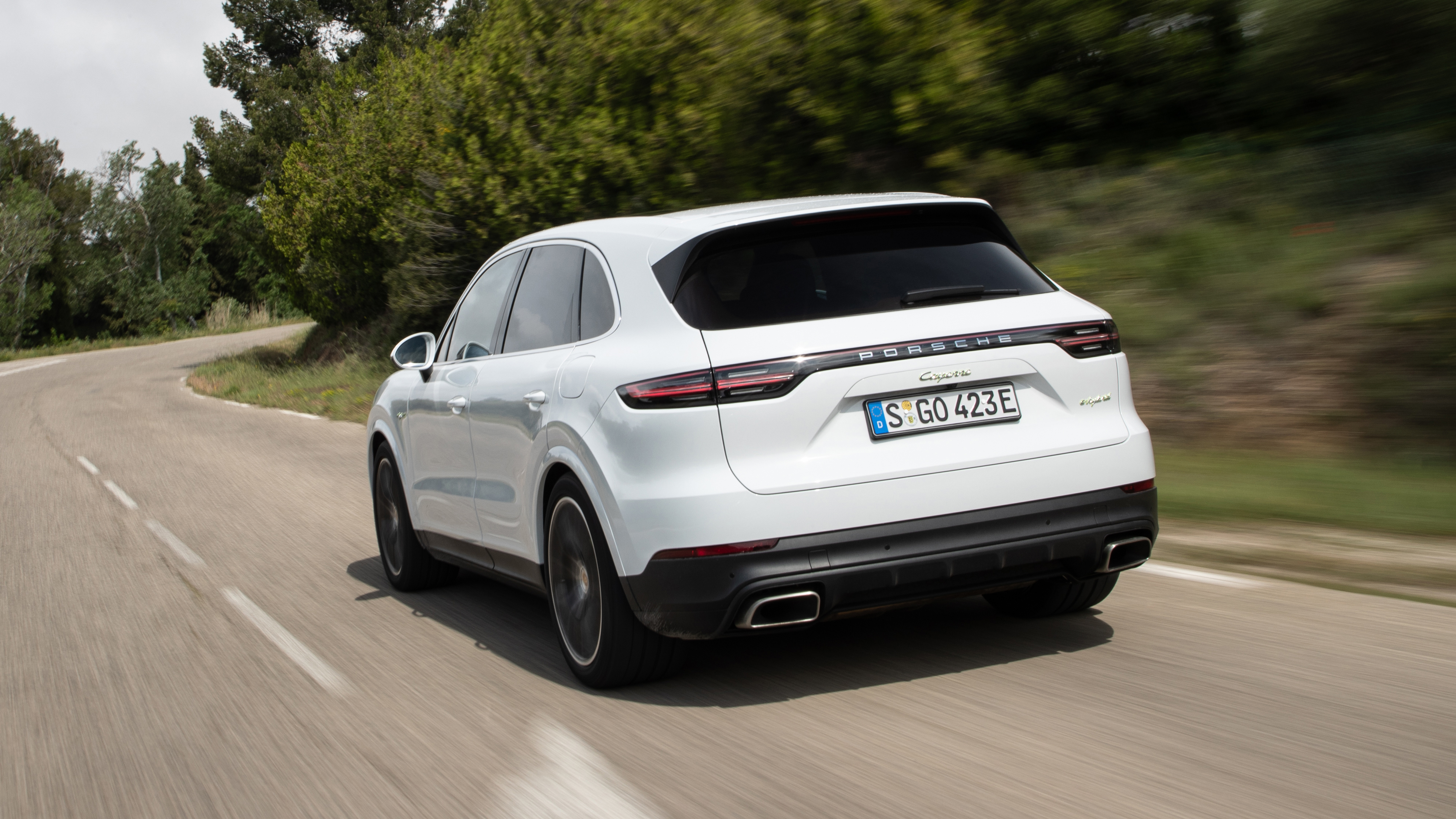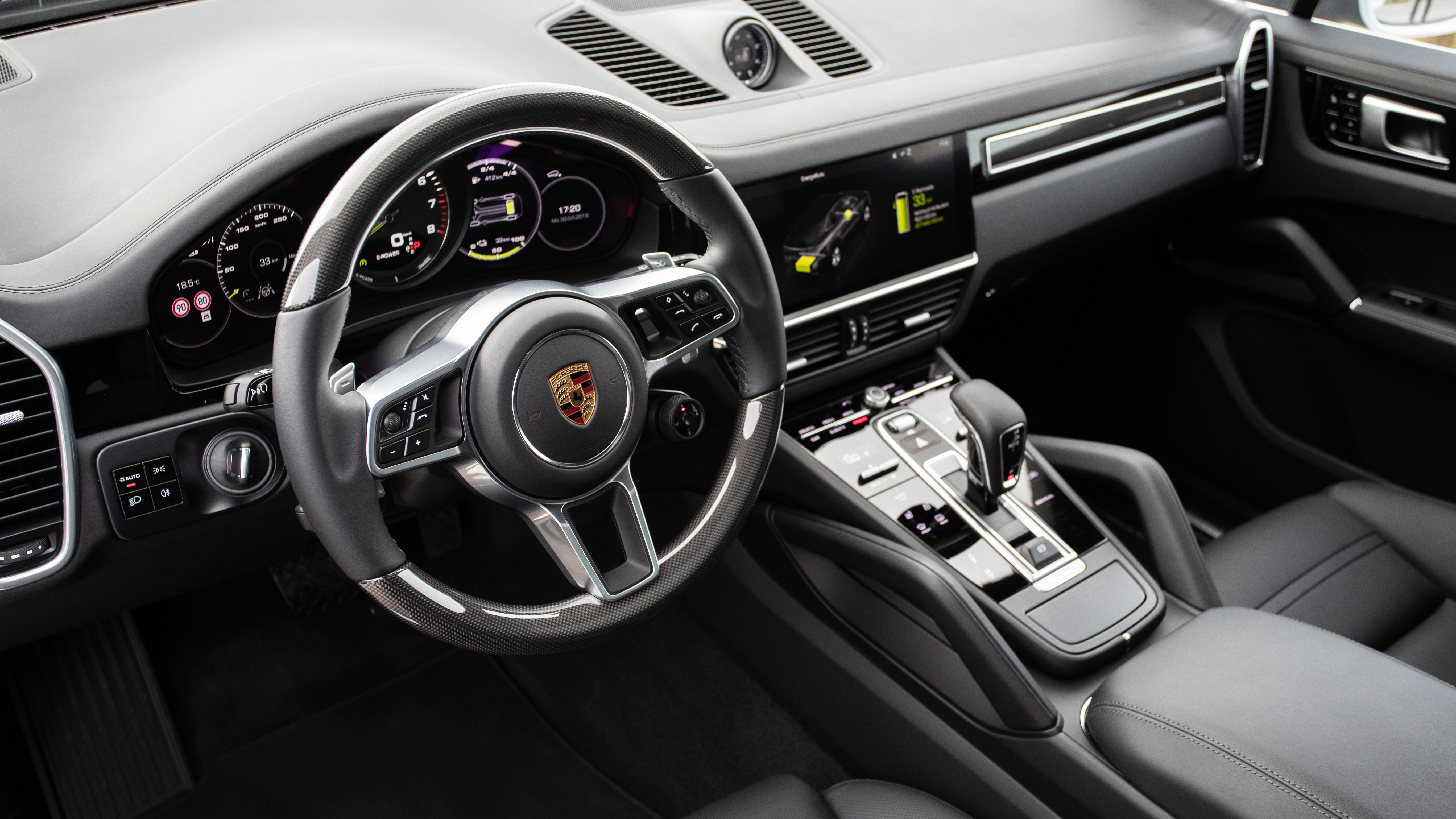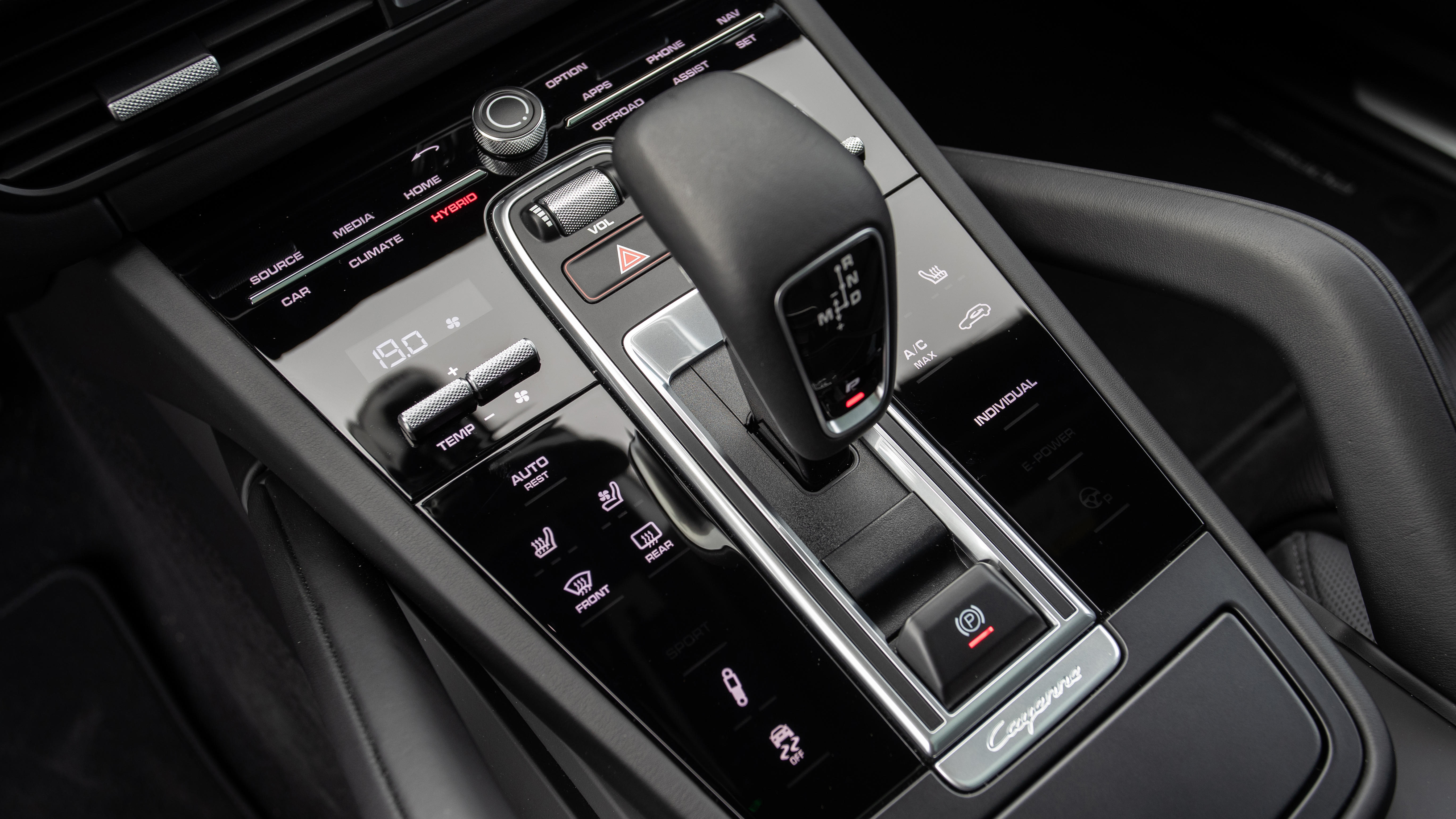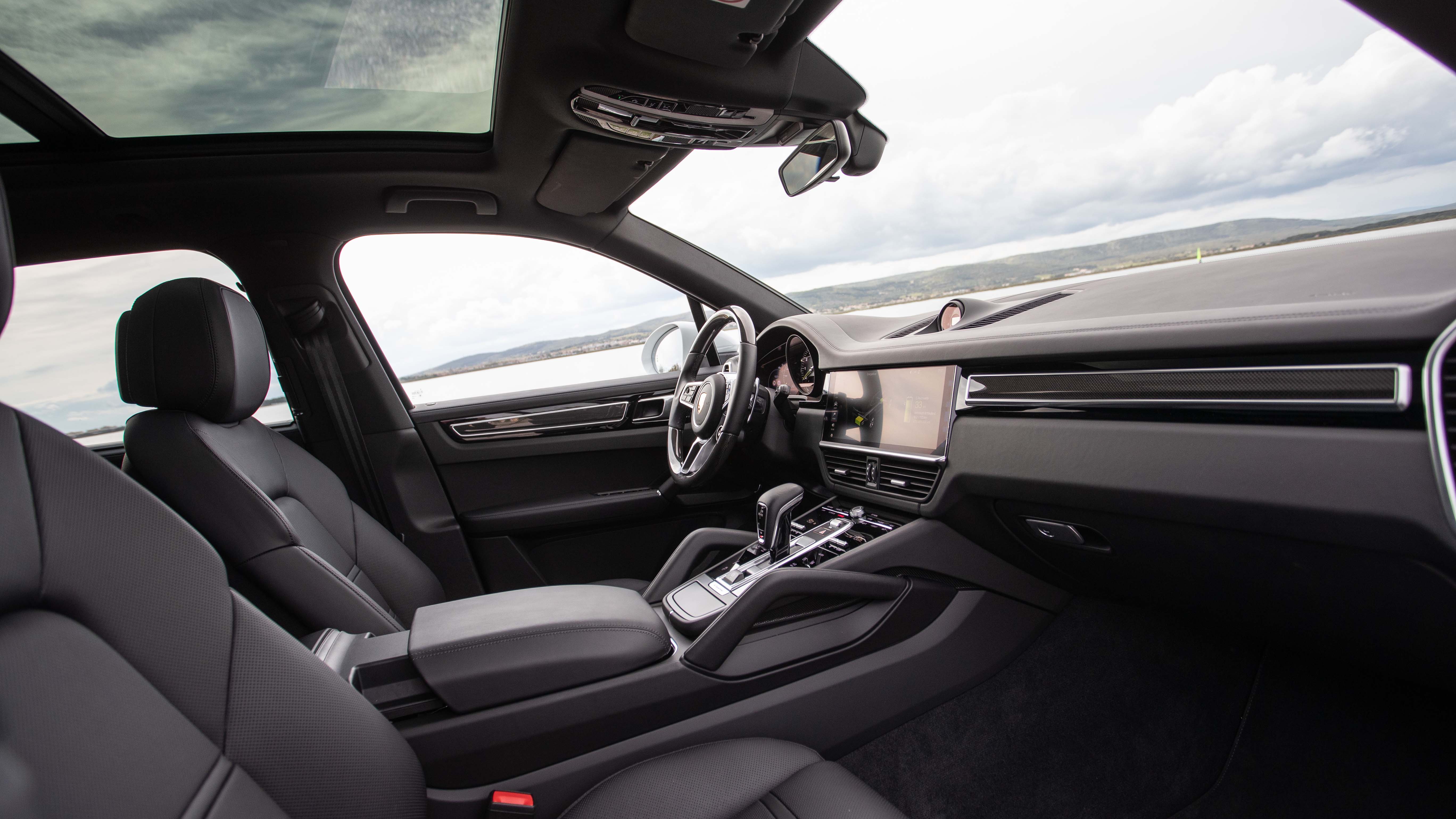
A plug-in hybrid Porsche Cayenne. All about the numbers, I take it?
All PHEVs live or die by their on-paper tax-dodging viability – but the new Cayenne is a bit different. Plus, as this is the third version of Porsche’s sporting luxury 4x4 to get a downsized engine and battery-powered boost, it’s also a useful yardstick. A chance to take stock of where and how progress is being made, in producing naturally quite-thirsty cars that don’t stick two fingers up to the planet they – and we – call home.
Let the number-crunching commence.
The first Cayenne S Hybrid was not a good car. It wasn’t a PHEV: you couldn’t plug it into the wall and charge up the battery. Its supercharged 3.2-litre V6 and electric motor combined for 328bhp and just 320lb ft, making the heaviest Cayenne by far the slowest. And because it couldn’t do much more than dawdle on all-EV power, CO2 emissions couldn’t cheat the NEDC test procedure. So it emitted a claimed 193g/km. That’s the same category as a modern Mercedes-AMG C63. With its socking great bi-turbo V8…
Porsche knew the Cayenne S Hybrid was a bad dog. It got its act together with the plug-in-able, Cayenne S e-Hybrid from 2015. Battery capacity went up six-fold, there was a charging cable in the boot and the NEDC test was thoroughly gamed. Under test conditions, this Cayenne could do 22 miles without the V6 waking up. That kneecapped CO2 emissions down to 79g/km (bye-bye road tax, cheerio London congestion charge), and lifted claimed economy to 83.1mpg. And to hell with the fact that in real-world testing, it was a 34mpg machine, chewing more fuel than the mighty Cayenne S Diesel, while going considerably less quickly, with more fuss.
Thanks for the history lesson...
Well, now you can mull the new Cayenne e-Hybrid’s figures in context. Behind the boxy grilles, Porsche has stuck with a 3.0-litre V6, but this new engine is turbocharged, and develops 335bhp. The 134bhp electric motor, concealed deep in the transmission, is supposedly related to the motors on board the 918 Spyder hypercar, and generates 40bhp more than the old twin-engined Cayenne’s e-motor. It’s powered by a 130kg battery under the boot floor, which charges in around two hours, via a fast-charging wallbox.
As a result, total system power is up to 456bhp and 516lb ft, from 410bhp and 435lb ft before. Healthy power gains, and masses more torque.
That’s why this new Cayenne isn’t like other PHEVs. Porsche says it’s built around a new strategy. And that strategy is more power and performance. More oomph. Because a Porsche SUV should have oomph by the skipload.
What about the all-important consumption?
Top Gear
Newsletter
Thank you for subscribing to our newsletter. Look out for your regular round-up of news, reviews and offers in your inbox.
Get all the latest news, reviews and exclusives, direct to your inbox.
Thanks to a thirty per cent increase in battery capacity, to 14.1kWh, EV range is now up five miles to 27 miles, and officially you’re looking at 83.1mpg and 79g/km CO2…
Hang on – that’s exactly what the old car got, no?
Yep. Like I – and Porsche – said, the priority for this new plug-in Cayenne is serving up the performance expected of a Porsche, rather than increasing its green credentials beyond the fluorescent brake calipers and instrument needles.
And don’t forget, those quoted numbers are from the outgoing NEDC test. The new, more real-world relevant WLTP test will knock those numbers down a peg or several. Interestingly, Porsche’s engineers say the car’s hybrid running strategy – when it chooses to deploy its e-boost, and when to use the petrol engine – has been ‘optimised’ for the NEDC test, but as soon as the WLTP test arrives, they can re-optimise the car for the new parameters, using a software reflash.
So, it's clever. What about fast?
Oh, it’s faster. You’re wafted on a faultless plateau of torque from 0-62mph in 5.0 seconds (a 0.9sec improvement) and to a largely irrelevant top speed of 157mph.
How does it handle? Still the thickset, last-to-be-picked at sports day member of the Cayenne family?
The latest Cayenne already headed more towards the luxury side of the SUV playing field, and weighing in at 2,295kg, it’s competent rather than keen for corners. An Audi SQ7, say, makes you relish bends, just to marvel in its freakishly athletic abilities. This doesn't.
The Cayenne e-Hybrid doesn’t embarrass itself – it’s got high reserves of grip, corners level and retains great composure. But you sense it’s putting up with that sort of treatment, not encouraging it.
Calm down and you’re rewarded with an extraordinarily comfortable, well-damped ride. Porsche are the masters of wheel control in a big SUV. It’s almost cosseting.
Is it mode overkill?
To make you feel like you’re driving a high-rise 918 Spyder, yes. The mode cycles goes like this. There’s E-Power (wooshy silence), then Hybrid Auto (let the car do the thinking), then Sport, (V6 always on, battery charge maintained for useful boost when you demand a squirt). Last is Sport Plus, which throws every bit of charge the batteries can muster at the e-motor, primes the turbos for max boost and tells the transmission to do its best Le Mans balls-out quali impression.
There’s also a kind of electric-only launch control Easter egg called E-Launch, which deploys maximum electric-only acceleration if the battery is charged and you hold the throttle and brake on together in E-Power mode. An E-Launch will get you from 0-60 (kph – that’s 37.6mph) in 6.3 seconds, and to a zero local-emission top speed of 83mph.
So what’s the most impressive bit?
I know this isn’t a sexy, poster-grabbing word, but it’s the integration. Whether or not plug-in hybrids are the future of motoring, an over-complex stopgap on our way to pure EVs or merely virtue-signaling (I suspect the answer lies somewhere in the middle, which is more the fault of lawmakers than carmakers), you have to respect the seamlessness of the mighty engineering going on here.
You’ve got a direct-injection, turbocharged petrol V6 that has to talk to an electric motor, and drive all four wheels of a 2.3-tonne luxury car, potentially on multiple terrains, through an eight-speed automatic gearbox... and then a multitude of settings and modes for the driver to mess it all about. The greatest compliment it’s possible to pay this new Cayenne is that for the vast majority of the time, you’ve little clue on board which team of components is working harder. Don't bother with the optional sports exhaust, though. The V6 is far from operatic.
That smoothness instantly gives the Cayenne e-Hybrid a worthwhile USP versus the Panamera e-Hybrid you’d imagine does the same job. See, the Panamera saloon uses an eight-speed PDK twin-clutch gearbox. But because conventional automatic gearboxes – torque-convertors – are happier towing trailers, the Cayenne uses an entirely different gearbox. Not PDK, but a smoother, oozier Tiptronic eight-speed auto. You might like your SUV to tow your jet-ski or your Airstream caravan, apparently.
And as a result, the handover from volts to dino-juice, and the teamwork between them when you ask for all 456 horsepower, is beautifully silken. Some incredible brains have been deployed to make that happen. And the result is a more soothing luxury hybrid than the frustrating Panamera equivalent.
It’s only caught out if you demand a burst of acceleration then change your mind, and lift out of the throttle just as the V6 wakes up. Now and again the engine’s left revving in no-mans land, and it takes the Cayenne’s brain three or four seconds to work out you’re off the gas and to calm the transmission down.
What about other hybrid SUV rivals?
The Cayenne’s on its own a bit there, because the likes of the Volvo XC90 T8 Twin Engine and BMW X5 40e push green credentials ahead of outtamyway thrust, and use turbocharged four-cylinder engines, not lustier V6s. As a result, they drink a bit – but not substantially – less fuel, but don’t have the Cayenne’s deep reserves of relentless torque. The Porsche is the quicker SUV with a halo.
What about a crazy Cayenne Turbo S e-Hybrid?
Porsche’s engineers are coy, but grin broadly when asked about slotting the 680bhp V8 drivetrain into a Cayenne. They have the tech, they know it fits, and the world’s not exactly short of demand for super-duper 4x4s right now. Look out, Lamborghini Urus…
Do I get much kit on board?
Happily, gone are the days when Porsche laughed and held out its hand when you asked for so much as heated seats or sat-nav as standard on a Cayenne. The e-Hybrid gets the stopwatch-tastic Sport Chrono pack, active air suspension with three road modes and a raised-to-tiptoes party piece, and multi-zone climate control thrown in. Soon there’ll be remote parking and even an anti-kerbing aid that’ll auto-steer away from kerbs, and save your 22-inch rims.
The graphics in of the 12.3-inch touchscreen are crisply rendered, but the interface itself is miles too fiddly, and has been logically bettered by the new MMI touch system of the latest Audi A6, A7 and A8. Same goes for the part-virtual instrument dials. Simplify those before they’re introduced to the new 911 please, Porsche.
How many em-pee-gees did you do?
After starting with a full charge, a day in the Cayenne e-Hybrid – and a hot one at that, meaning lots of air-con action – resulted in a claimed 38.7mpg. Less time spent in Sport Plus would’ve upped that, but hey, got to test all the modes…
You’re missing one number. How much?
There are a couple more figures to digest actually. Right, the price: that’s £67,128. That makes it almost £1,000 cheaper than the 434bhp Cayenne S, which is a couple of tenths slower from 0-62mph, and only claims 30mpg. Unless you’re a devotee of improbably agile SUV handling (which is a paradox anyway), then the hybrid pretty much erases the case for the standard Cayennes.
Now, Porsche is considering a diesel version. It’ll have a V6, not a V8, and it’s by no means confirmed. But consider this. In the first quarter of 2018, sixty per cent of all Panameras sold in Europe were hybrid-powered. So far, hybrids have only made up 5-12 per cent of Cayenne sales – and Porsche say they want a 25 per cent share for the plug-in this time. We reckon they’ll double that.
7/10
Featured

Trending this week
- Car Review
BMW iX3




